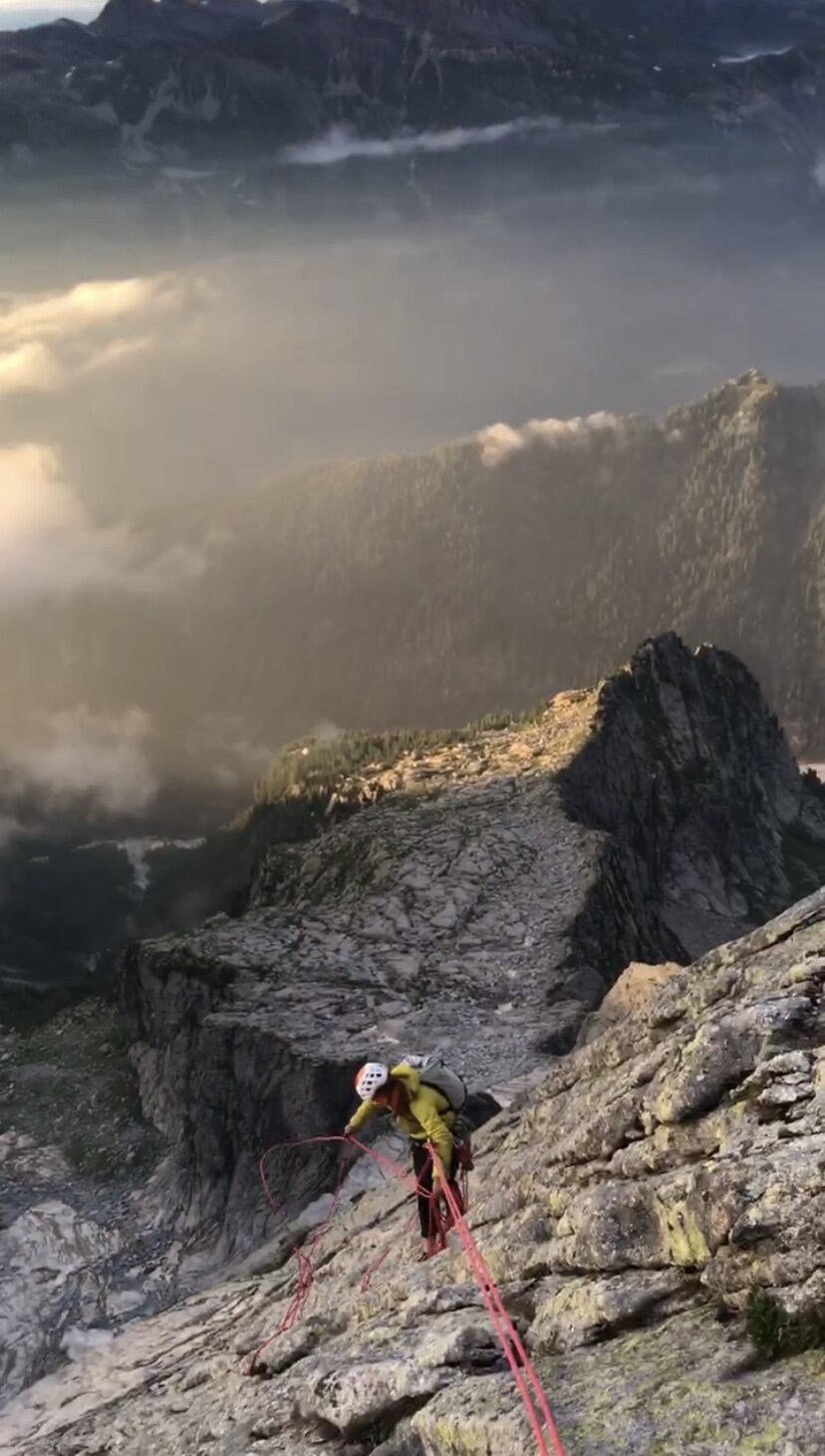Rappelling the lower slabs on the Piz Badile’s North Ridge under spectacular evening light. The Piz Badile’s North Ridge is a notoriously complex 2,300’ rappel.
Top Ten Rappel Hacks
Espresso Note
Read Time - 4 minutes
April 2020
Rappelling is the often the most dangerous part of day. Make rappelling safer, smother and more efficient with these ten hacks.
1. Always rappel with 60cm-90cm of extension when using tube-style devices, and attach your prusik to your belay loop, not your leg loop. Never rappel with a device on your belay loop and a prusik on your leg loop, this does not leave enough separation between the device of the prusik.
2. If rappelling on a munter hitch, it is possible to add security with a friction hitch and a redirect.
Tie a munter on an HMS carabiner on your belay loop. Tie a friction hitch on the rope above the munter hitch, and extend this 60cm-90cm from your harness on a sling girth hitched to your harness. Take the braking strand of the munter and clip this through a second locking carabiner clipped to the HMS with the friction hitch tied on it. The additional benefit of this set-up is that the brake position of the munter is now downwards as for a tube-style device which will feel more familiar for most climbers.
3. Clip a carabiner loose, or through the end of your PAS/‘cow’s tail’ to the rope you are pulling, above your rappel device. This will serve as a reminder of the pull rope when you get to the next stance.
4. Always rappel with the end of the ropes clipped to you, and never rappel past a hanging loop, or point where the rope(s) is stuck.
5. If rappelling over loose and/or blocky terrain, a series of shorter rappels is safer than fewer long rappels. When building stances, try to build them out of the line of the rappel and with some shelter if possible.
6. If rappelling over a sharp edge, try to rig as high as you can to reduce the angle of the rope over the edge, and consider padding the edge if possible. In alpine terrain you can pad the edge with packed snow.
7. If rappelling on an equipped rappel line. Carry an anchor kit, include two wiregates, an 120cm sling, and an HMS locking carabiner. This sling will either be pre-tied as a quad, or you will rig it for a ‘magic X’ at each rappel station. The HMS will function as a ‘master biner’ which all members of the party can clip to.
8. When the first climber arrives at the next rappel station, they should pass the end to pull through the maillon or rap ring, and flake the other rope or strand out so it will run cleanly when the rope is pulled.
9. If rappelling on an assisted braking device, you will need to use the ‘biner block’ method. This also works when one of your lines is damaged, so can be used exclusively for retrieval
10. When rappelling on an equipped rappel line, clip into the next stance when you are above it so you rappel down onto it. This saves you from rappelling too low and having to ascend back to the stance.
Learnt something new? Buy the No Thrills team a coffee to say thanks!

